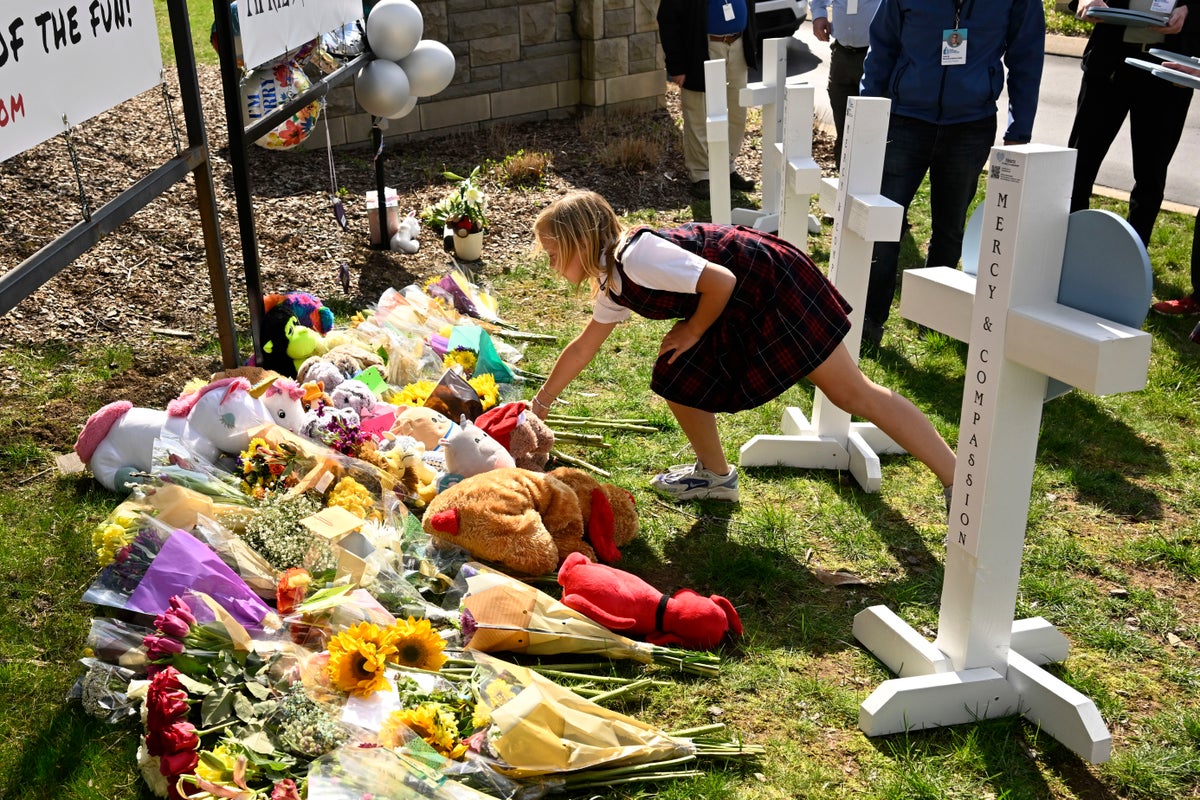
Moments after the assailant who killed six people at a Nashville private school was identified as transgender, a baseless narrative emerged: that there has been an incredible rise in transgender or nonbinary mass shooters in recent years.
Some pundits and political influencers on social media went further, suggesting that movements for trans rights are radicalizing activists into terrorists.
The data tells a different story, according to gender and criminology experts. Mass casualty shootings perpetrated by someone identifying as trans or nonbinary are rare, and in fact, those groups are far more likely to be the victims of violence. Here’s a closer look at the facts.
CLAIM: Four recent shootings show there has been an “incredible rise” in transgender or nonbinary mass shooters in the past few years, making the group “by far the largest group committing as a percentage of the population.”
Donald Trump Jr. spread the narrative widely on Twitter, claiming the supposed “incredible rise” and later saying there was a clear trend forming. The idea was amplified by hundreds of other social media users. Trump Jr. did not respond to a request for comment.
THE FACTS: While specific data on transgender and nonbinary mass shooters can be hard to isolate, available information shows that the overwhelming majority of assailants in mass shootings are cisgender males.
In making the claim, social media users are citing four examples over the past five years in which the assailant in a shooting identified as trans or nonbinary: the November killing of five at a gay nightclub in Colorado Springs, Colorado; a 2019 shooting at a Denver-area school by two shooters, one of them a trans man, that left one student dead and eight wounded; a 2018 shooting at a Maryland warehouse that left four dead, including the shooter; and the shooting Monday in Nashville.
The number of mass shootings committed by those identifying as trans or nonbinary — and their ratio compared to mass shootings committed by other groups — is hard to quantify. It depends on the database used, how the act is defined and how gender identity is recorded — for example, transgender males may statistically be counted as just men. But experts agree that the most reputable information still shows a clear pattern that cisgender males are the most likely to commit such an act of mass violence.
Using the Gun Violence Archive, and a definition for mass shooting meaning “at least four gun injuries,” there have been 3,561 mass shootings since the beginning of 2016.
Laura Dugan, a professor of human security and sociology at Ohio State University, said the four widely cited examples out of the 3,561 shootings translates to 0.11% being perpetrated by someone who is not cisgender — a very low number relative to the number of mass shootings total.
“We cannot statistically make any claim of a trend," she said.
Dugan also pointed out that there are some doubts about the nonbinary identity asserted by the Colorado Springs shooter.
James Alan Fox, a statistician and professor of criminology, law and public policy at Northeastern University, helps maintain the Associated Press-USA TODAY-Northeastern database of mass killings in the U.S., which does not contain full data on perpetrators' gender. The claims on social media this week amount to extreme cherry-picking of data, he said.
“There are a lot of mass shootings, hundreds of mass shootings, and to cherry-pick four of them and say here’s a trend, that’s wrong,” Fox said. “You can’t make a conclusion that that’s significant. It is not significant in any statistical sense.”
Olivera Jokić, the director of the gender studies program at the John Jay College of Criminal Justice, referred to a National Institutes of Justice database that tracked U.S. mass shootings — defined as a shooting that kills four or more people — from 1966 to 2019. The research found that of the 172 people who committed public mass shootings covered in the database, 97.7% were male. The data makes no distinction between transgender and cisgender perpetrators.
“The political rhetoric using ‘statistical information’ about gender identification of mass shooters is wrong," she said, “and seems to serve to distract from existing discussions about mass shootings as a public health problem.”
The claims come amid a flood of legislation nationwide targeting transgender people. Conservative lawmakers are pushing dozens of proposals in statehouses to restrict transgender athletes, gender-affirming care and drag shows. Last week, a pair of laws passed in Iowa that restrict the bathrooms transgender students can use and ban gender-affirming medical care. Other legislative proposals in at least eight states could prevent transgender people from changing their driver’s licenses and birth certificates.
Against that backdrop, studies also show trans people are more than four times more likely than cisgender people to be victims of violent crime, according to a report by the Williams Institute, an LGBTQ think tank at the University of California, Los Angeles.
“This is capitalizing on tragedy for political purposes," Fox said. "One should not conclude that being trans or nonbinary, they should be more likely to commit a crime like this.” ___
This is part of AP’s effort to address widely shared misinformation, including work with outside companies and organizations to add factual context to misleading content that is circulating online. Learn more about fact-checking at AP.







